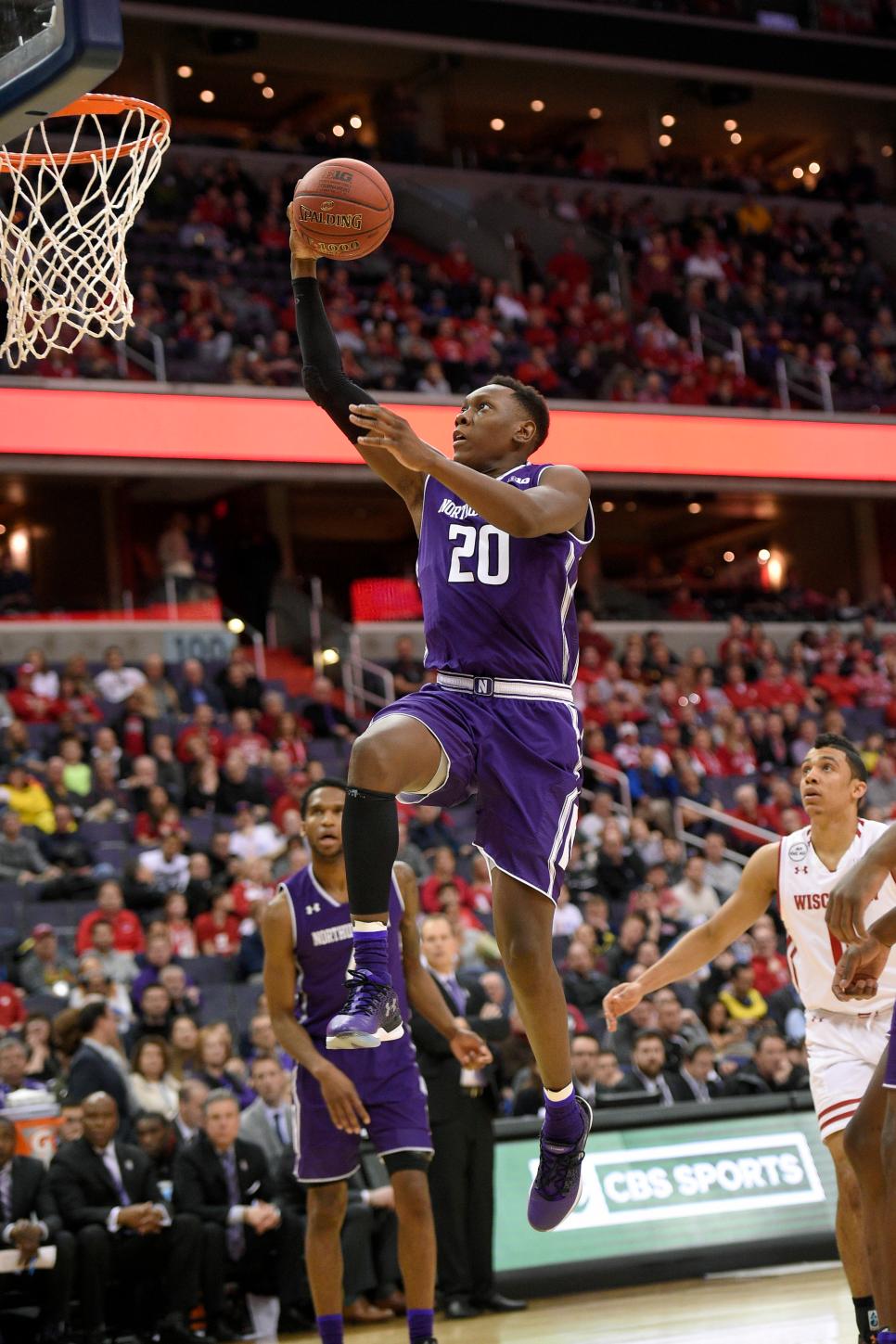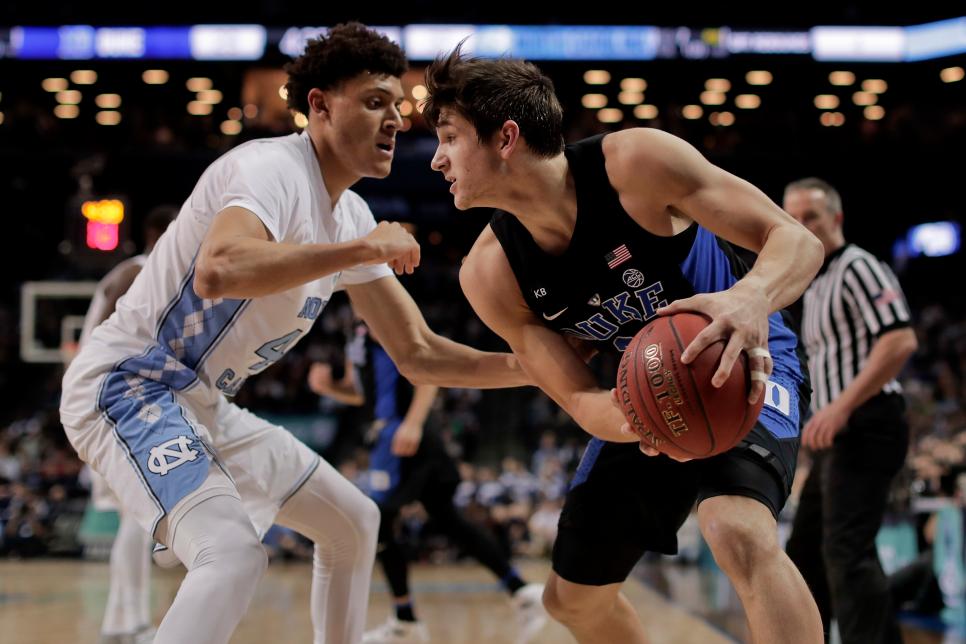Hello there, reader! Perhaps you are somebody who knows nothing about college basketball, and wants to infuriate your friends and co-workers by winning your bracket pool. Perhaps you are a lapsed fan, who looks at this year's bracket and feels lost. Or perhaps you are a big fan who has learned, after all these years, that your knowledge is absolutely worthless when it comes to picking winners in March. I have some good news: The MoneyBrackets System is here for all of you.
In a moment, I'll introduce you to 11 simple, fail-proof tips that put history and statistics on your side. While your colleagues are making the same old mistakes that have plagued American bracketologists for decades, you will be exploiting market inefficiencies and raking in their dough. Then, totally free of charge, I'll actually show you the 2017 MoneyBracket itself. Before we get to that, listen to these very real testimonials:
"Three years ago, I knew nothing about sports. Now I have four Ferraris, and am so cruel to my butlers that many have quit!" —Marjorie, Sioux Falls
"Life before MoneyBrackets was bad. Now? It's good!" —Todd, America
There you have it! You too can be like Marjorie and Todd. Read on to learn the 11 profound secrets of the MoneyBrackets system—today is the day you change your life.
1. Don't Get Fancy: The 1- and 2-Seeds are Your Friends
From 1985—the year the field expanded to 64 teams—until 2016, 80 of 128 Final Four teams have been seeded either 1 or 2. That means there's only a 32.5% chance that any region will send a team with a 3-seed or lower to the final weekend. Careful, though—that doesn't mean you have a 32.5% chance of guessing it right! Even if it happens, you'd have to guess the correct region, which is a 1-in-4 chance. Then, you'd have to pick the correct team—is it the 3-seed? 4-seed? 5-seed? Lower?! As you see, the probabilities quickly stack up against you.
The lesson? As good as it feels to call a Final Four Cinderella and feel smarter than your friends, you will almost definitely get it wrong. The value of a correct pick increases with every round, so why sacrifice those sweet, sweet points for a misguided hunch?
Corollary: If the 2-seed looks just as good as the 1-seed, you'll stand to gain ground on the competition by picking the 2-seed in an Elite Eight or Final Four match-up. I love Arizona over Gonzaga in a weak region, and Louisville over Kansas in what is essentially a toss-up game.
2. Really, Really, Don't Pick Any 8- or 9-seeds to beat the 1-seed in round two.
I know you want to do it. I know it's happened before. I know you think Gonzaga is vulnerable to a plucky Northwestern squad. But going back to the numbers, 1-seeds are an astounding 111-17 against 8s and 9s in the second round. That's an 87% success rate, and your chances of picking the rare upset are beyond dismal.

Nick Wass
3. Defense, By Itself, Does Not Win Championships. (Hint: Offense Doesn't Either)
We're about to get a little deep into the numbers, but the simple explanation is this: Imbalanced teams tend to fail in March, and you can steal a bunch of points in the early rounds if you pay attention. When I did my original research for MoneyBrackets, I found via Kenpom.com that teams who finished the year with a top-10 offense or defense, but were lower than 70th in the other rating, consistently failed. Of the 84 teams that fit the criteria, only one made the Final Four, and only three more made the Elite Eight. Eighty-two percent of them didn't even make it to the Sweet 16—and that's with a top ten offense or defense!
This year, you want to avoid these imbalanced teams: UCLA (playing poorly of late anyway), Xavier, Oklahoma St., Michigan, Marquette, Wake Forest, Arkansas, Virginia Tech, VCU, Minnesota, Seton Hall, and South Carolina. (Stay away from the last four especially—those are the "Good D, Bad O" teams, and they tend to fare worst of all.)
4. Regular Season Conference Champs are Good, Trendy Conference Tourney Champs are Bad
Again, a simple truth: Teams that win the regular season conference title are far more reliable than teams who put together a late season run and won their conference tournaments. (If they win both, terrific.) This is incredibly beneficial knowledge, because the media has a natural tendency to over-hype teams that finished with a bang—that's the recency bias, and it will influence who your competitors choose. When I ran the numbers from 2000-2014, I found that of 60 Final Four teams, 20 had won just the regular season title, 17 won both titles, 15 won neither title, and only seven won just the conference tournament title. Only three of the latter category ever made a title game. Over the last two years, the trend has continued—zero of eight Final Four teams won just their conference tournament. (Kemba Walker's UConn, you may remember, was the major outlier in 2011—the exception that proves the rule.)
You'll want to avoid these trendy tournament-only winners in 2017—especially for Elite Eight or Final Four runs: Iowa St., Duke, Michigan (that's two dings on Michigan), and Rhode Island. (Note that Arizona was a co-champ in the Pac-12 regular season, so they don't count here.) Meanwhile, don't count out teams like Kansas or North Carolina just because they were upset in their tournaments.
5. Find the Right Cinderella, and then Restrain Yourself
In 2014, the first year of MoneyBrackets, I pegged 11-seed Tennessee as a likely Cinderella, and after winning in the first round by dominating Iowa, they "upset" UMass (by 19 points), destroyed Mercer by 20, and missed the Elite Eight by a hair with a two-point loss to Michigan. In 2015, I chose Utah, and the Utes took care of a good Stephen F. Austin team in round one, upset Georgetown in round two, and lost by just six points to eventual champions Duke in the Sweet 16.
What did these teams have in common? They came from big conferences, so they were used to strong competition, they underperformed just slightly in the regular season to earn a low seed, and—most importantly—they had balanced offense and defense.
Who is that team in 2017? There are a few candidates, but my favorite is Kansas State. With top-50 offense and defense, and a proven ability to hang with (and occasionally beat) teams like Kansas and Baylor and West Virginia, the Wildcats are well-positioned to beat Wake Forest and a vulnerable UCLA, and maybe stun the winner of Wichita/Kentucky. But hold your horses—this is where restraint comes in. Don't cost yourself points by picking them a round too far. The Sweet 16 is plenty.
6. Beware the Extremely Slow Teams
Teams that play at a slow pace are more vulnerable to upsets because their games, by definition, contain fewer possessions and more room for volatility. This smaller sample size is why Virginia always manages to disappoint its fans, and ditto for the Wisconsin Badgers almost every year under Bo Ryan except 2015. It's important to remember that these teams aren't automatically doomed...but they are extra susceptible to bad luck at a particularly fickle time of year. And as we know, bad luck only needs to strike once. Be cautious of Virginia, along with Michigan (!!), Miami, St. Mary's, Baylor, Wisconsin, SMU, and Cincinnati.
7. Mid-Majors: Not Your Final Four Friends
Even by the loosest definition of "mid-major," only six have ever made the Final Four since the field expanded in 1985. Only three have ever made the championship game, and boy genius Brad Stevens coached two of them, while Derrick Rose starred for the third. None of them won. (Sorry, but I refuse to count UNLV's roster of paid semi-professionals.)
You will desperately want to pick a risky mid-major, or even a not-so-risky one like Gonzaga or Wichita State. Just remember—they don't play the same level of competition as the power conferences, and it almost always shows under pressure. As good a coach as Mark Few is, there's a reason he's never made a Final Four with the Zags. Avoid the temptation, and you'll have a leg up on the competition.
8. Mid-Majors: Against Bad Power Conference Teams, Go Crazy!
In 2014, I looked for the records of major conference teams against mid-majors in the first round. In games between teams seeded 5th through 12th, the majors only had a 58 percent winning percentage. Narrow the parameters to 6th through 11th, and it went down to 52 percent. And if we just looked at the 7-10 and 8-9 first round games, the mid-majors actually led the series 64-56! So if you have a good reason, take the mid-major. I see three no-brainers: Wichita State over Dayton, Middle Tennessee over Minnesota, and Marquette over SC (one of those 'bad O, good D' teams).
9. Still, Be Relatively Conservative in Round One
The 8-9 games are true toss-ups, so use the other principles to decide those, but 7-seeds win more than 60% of games against 10s, 6-seeds win 66% against 11s, and 5-seeds win 63% against 12s. After that, it jumps up like crazy—4-seeds have a 79% winning rate, 3-seeds are at 85%, 2-seeds are virtually unbeatable, and 1-seeds are actually unbeatable. Play the percentages—have a compelling reason if you're picking a 10-12-seed to advance, and even if you think you have a compelling reason to back a 13- or 14-seed . . . you don't.
10. Be aware of coaching match-ups
They matter. A lot. Scott Drew will lose a close game to SMU in round two. Izzo is good enough to finagle a win against Miami. Rick Pitino will know how to rattle Oregon, and then he'll out-coach Bill Self in the Elite Eight. Coach K will have something up his sleeve for SMU.Chris Holtmann at Butler is a little too smart to fall to Middle Tennessee. Mike Brey will handle Gonzaga, and Sean Miller will own Leonard Hamilton and FSU.
11. Pick the Smart Champion
This is the most important advice of all. In all but the strangest years, the winner of a standard bracket pool will pick the correct champion, if only because it's worth so many points. I've already told you not to bother picking any team lower than a 1- or 2-seed to make the Final Four, but then what? In a year with an obvious champion, there's a good argument to be made for going with the crowd, cashing in, and beating them in the earlier rounds. This year, there's no overwhelming favorite, so the advice changes slightly—pick a team that can potentially win the whole dang pool for you.
That means looking for a team that can absolutely win, but will be overlooked. In 2017, there's a clear choice: North Carolina. Forget Gonzaga (mid-major rule), forget Duke (trendy conference tourney winner), forget the Pac-12 teams (the last time that conference won a title was 1997), and forget Villanova (everyone will pick them, over-valuing last year's title). Kentucky and Louisville are a little bit tempting, and Kansas is incredibly tempting—both are solid picks, if you go that way—but Carolina's experience, size, and relatively low profile after blowing the ACC semifinal to Duke make the Heels a perfect sleeping giant.
Now, at long last, I present you with the official 2017 MoneyBracket. I'd say good luck, but you won't need it—that's the MoneyBrackets guarantee.

